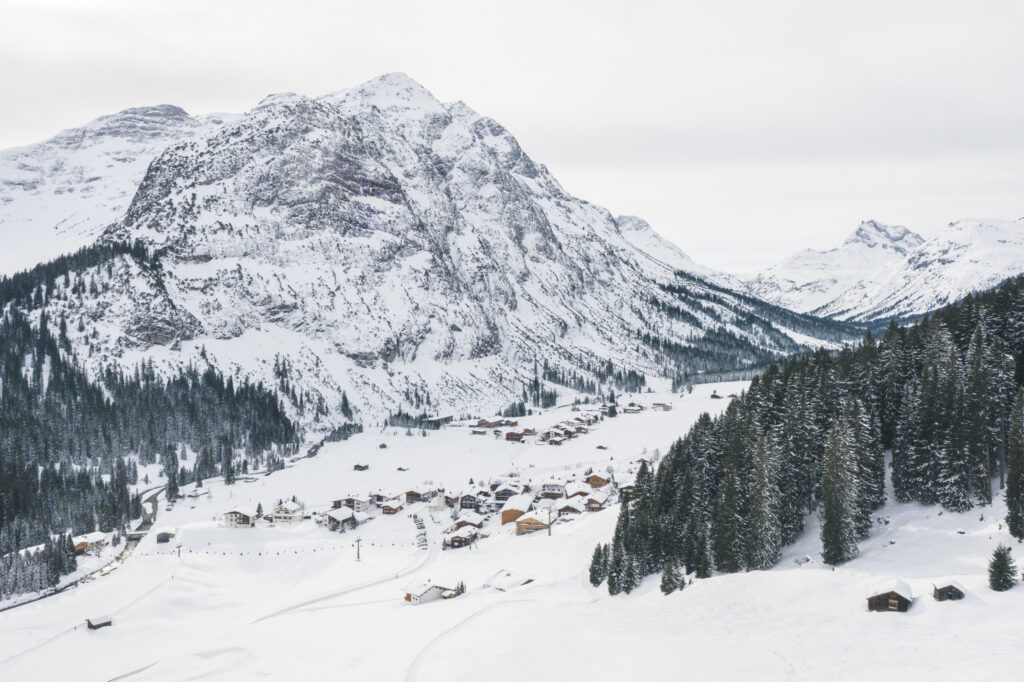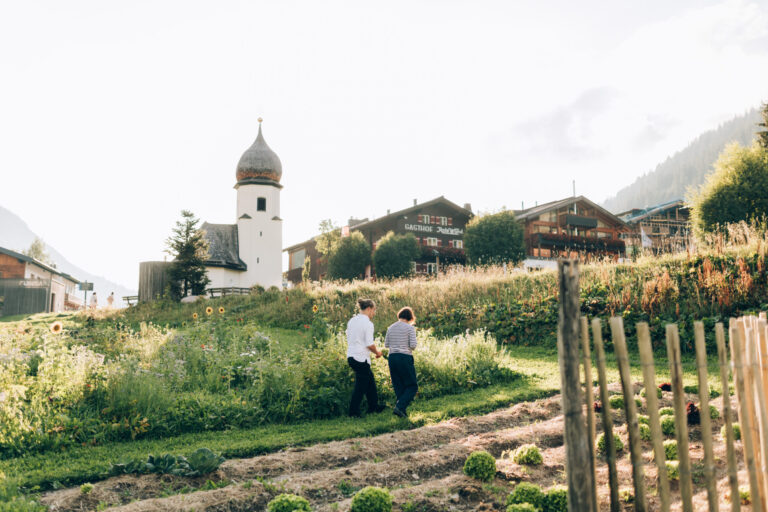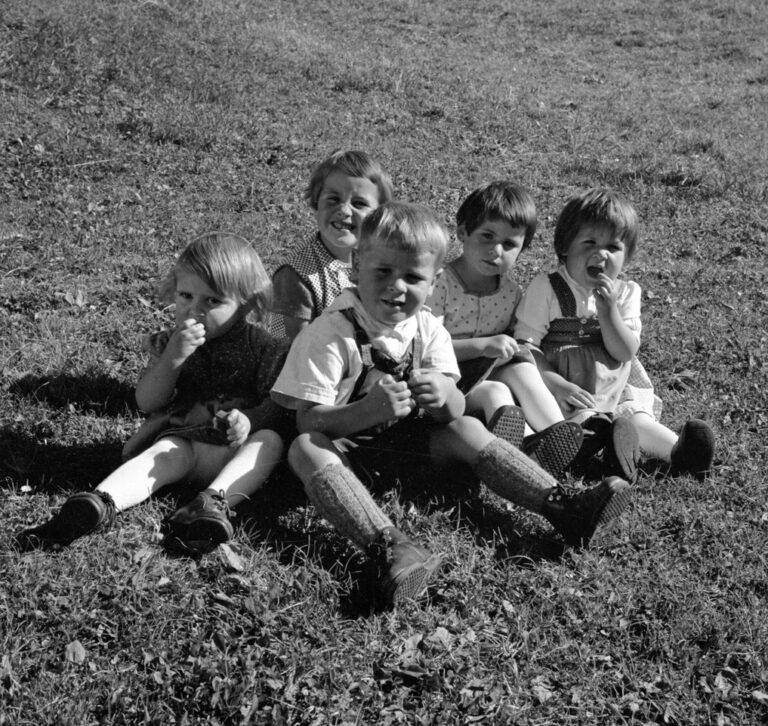Sustainable Hospitality at Rote Wand Gourmet Hotel
What connects the Rote Wand and the biomass heating plant in Zug? The heat conduction!
Have you ever taken a walk with your loved ones through the snow-covered village of Zug? Then you probably know how chilly and stormy a day can be here in wintertime. Cold fingertips, red cheeks and snowy eyelashes are the reason why you simply love to come through the entrance door of the Rote Wand Gourmet Hotel. The cosy and wonderfully warm atmosphere in the hotel invites you to feel comfortable. Especially when you know where this pleasant warmth comes from. Right! From the heating plant in Zug!
Sustainability in Zug/Lech am Arlberg.
It’s autumn. The colourful leaf trees shine out between the dark green spruces. The mountain peaks are covered by snow. Soon it’s the time of the year again. Winter is just around the corner! The heating plant is not far away from the hotel. Even though the object made of natural wood is used for economic purposes it fits perfectly into the landscape. Thus the lovely character of the village and the natural harmony are preserved.
The closer you get to the heating plant, the more intense you can smell the fresh wood, which is artfully stacked next to the building. Right on the other side, embedded in the open warehouse, four huge piles full of wood chips one of which is about the size of a matchbox. You can imagine how much work this means. The temptation to jump in there is great, as everything looks so neat and tidy. Once a year in autumn, right before the winter hustle and bustle, the wood gets delivered. Although it is one of the coldest places in Zug, it’s indeed possible to work with the valuable material. “In fact, we need some humidity, as it’s a great heat transporter,” explains Franz-Josef, managing director of the heating plant in Zug.
Day by day, Franz-Josef and his two working colleagues Daniel and Peter take care to supply all households around Lech and Zug. They are always there when they are needed and do their best to maintain it. The heating plant in Zug is unmanned. Three times a week Franz-Josef checks whether “everything is fine or not” as obviously it should not start to burn. However, the temperature regulation is only one of many other responsibilities they have to take since they manage everything themselves – from billing and material purchasing to maintenance. The heating plant is quite noisy and the heat emitted by the two boilers is clearly noticeable. The small boiler with 550 kilowatts is sufficient for the summertime, the larger one with 1100 kilowatts is needed during the winter season.

Heating Plant Zug | Data & Facts
The ground-breaking ceremony took place in May 2007. All oil tanks were literally “thrown out” of all houses and properly disposed of. As early as October, the households were supplied with biomass for the very first time, including the Rote Wand Gourmet Hotel. 3.5 million € was the overall investment of the project. 1/3 of the amount was provided by the locals of Zug as well as by the community and the heating plant of Lech. 1/3 was supported by the state of Vorarlberg. The rest was bank-financed. What a great project, realized in such a small village! Due to the environmentally friendly energy supply, unpleasant smells and costly maintenance were – from now on – a thing of the past. Instead, there was a lot more space available due to the disposal of the oil tanks.
5000
stère wood chips are burnt annually
100%
regional wood waste within a radius of 100 kilometres
3.800.000
kW are sold annually
500.000
litres of oil are saved annually
200
tons of CO2 are saved by the Rote Wand Gourmet Hotel through district heating
1/3
of the entire biomass is being used by the Rote Wand Gourmet Hotel. It is the largest customer in Zug and therefore the most important one.
#Conclusion
The team of the Rote Wand Gourmet Hotel is proud of our partner, because together with the “Heizwerk Zug” we can slightly reduce our ecological footprint!






